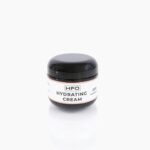When it comes to hair removal, you may find yourself overwhelmed by the myriad of options available. Among these, light-based hair removal has gained significant popularity due to its effectiveness and long-lasting results. This method primarily utilizes light energy to target hair follicles, leading to a reduction in hair growth over time.
Unlike traditional methods such as shaving or waxing, which only remove hair at the surface level, light-based techniques aim to disrupt the hair growth cycle at its root. You might be curious about how this process works in practice. Light-based hair removal typically involves the use of lasers or intense pulsed light (IPL) devices.
These technologies emit specific wavelengths of light that are absorbed by the pigment in the hair. This absorption generates heat, which damages the hair follicle and inhibits future hair growth. As a result, many individuals experience a significant reduction in hair density and thickness after a series of treatments.
Understanding these basics can help you make informed decisions about whether this method is right for you.
Key Takeaways
- Light-based hair removal uses specific wavelengths of light to target and damage hair follicles, inhibiting future hair growth.
- Devices for light-based hair removal work by emitting light energy that is absorbed by the pigment in the hair, converting to heat and damaging the follicle.
- Selective photothermolysis is the process of using specific wavelengths of light to target and destroy the hair follicle without damaging surrounding tissue.
- There are different types of light-based hair removal devices, including laser and intense pulsed light (IPL) devices, each with their own unique mechanisms and effectiveness.
- Factors affecting the effectiveness of light-based hair removal include skin and hair color, hair thickness, and the specific device and settings used.
How Light-Based Hair Removal Devices Work
Light-based hair removal devices operate on a straightforward principle: they convert light energy into heat energy. When you undergo a treatment session, the device emits pulses of light that penetrate the skin and are absorbed by the melanin in your hair. This process is designed to target the hair follicles while minimizing damage to the surrounding skin.
The heat generated during this interaction effectively destroys the follicle’s ability to produce new hair. As you consider using a light-based hair removal device, it’s essential to understand that multiple sessions are typically required for optimal results. Hair grows in cycles, and not all hairs are in the same growth phase at any given time.
Therefore, treatments are spaced out over several weeks to ensure that each hair follicle is targeted during its active growth phase. This systematic approach allows for a more comprehensive reduction in hair growth, making it a popular choice for those seeking a long-term solution.
The Science of Selective Photothermolysis

At the heart of light-based hair removal lies the concept of selective photothermolysis, a term that may sound complex but is quite fascinating. This scientific principle refers to the selective absorption of light by specific chromophores—in this case, the melanin in your hair. When light is directed at your skin, it is absorbed by the darker pigment in the hair rather than the surrounding skin tissue.
This selectivity is crucial for ensuring that the heat generated does not cause damage to your skin. You might wonder why this selectivity is so important. The effectiveness of light-based hair removal hinges on the contrast between your skin tone and hair color.
The greater the difference, the more effective the treatment tends to be. For instance, individuals with dark hair and light skin typically experience better results because the light can easily differentiate between the two pigments. Understanding selective photothermolysis can help you appreciate why certain individuals may achieve faster results than others.
Different Types of Light-Based Hair Removal Devices
| Device Type | Technology Used | Suitable Skin Types | Treatment Areas |
|---|---|---|---|
| Laser Hair Removal | Laser | Fair to medium skin tones | Most areas except around the eyes |
| IPL Hair Removal | Intense Pulsed Light | Various, depending on device | Large areas like legs and back |
| Diode Hair Removal | Diode laser | Most skin types | Large and small areas |
| Alexandrite Hair Removal | Alexandrite laser | Fair to olive skin tones | Large areas like legs and back |
As you explore your options for light-based hair removal, you’ll encounter various devices designed for different settings and needs. The most common types include laser hair removal devices and intense pulsed light (IPL) systems. Laser devices use focused beams of light to target specific areas, making them ideal for precision treatments on smaller body parts like the face or underarms.
On the other hand, IPL devices emit a broader spectrum of light, allowing for larger areas to be treated more quickly. Each type of device has its advantages and disadvantages. For example, laser treatments tend to be more effective for individuals with darker hair and lighter skin due to their precision and focus.
Conversely, IPL devices may be more versatile and suitable for a wider range of skin tones and hair colors but may require more sessions to achieve similar results. As you consider which device might be best for you, it’s essential to consult with a qualified professional who can assess your unique needs and recommend an appropriate treatment plan.
Factors Affecting the Effectiveness of Light-Based Hair Removal
Several factors can influence how effective light-based hair removal will be for you. One of the most significant factors is your hair color and thickness. Darker, coarser hair tends to respond better to light-based treatments because it contains more melanin, which absorbs light more effectively.
Conversely, fine or light-colored hair may not respond as well, as there is less pigment for the light to target. Your skin type also plays a crucial role in determining treatment effectiveness. Individuals with lighter skin tones generally experience better results because there is a greater contrast between their skin and hair color.
However, advancements in technology have led to devices that can safely treat a broader range of skin tones. Additionally, hormonal factors can affect hair growth patterns; for instance, hormonal imbalances may lead to increased hair growth in certain areas, which could impact treatment outcomes. Understanding these factors can help set realistic expectations for your light-based hair removal journey.
Safety Considerations and Potential Risks
Skin Irritation
One common concern is skin irritation, which may manifest as redness or swelling following treatment. This reaction is usually temporary and subsides within a few hours or days.
Changes in Skin Pigmentation
Another potential risk involves changes in skin pigmentation. Some individuals may experience hyperpigmentation (darkening) or hypopigmentation (lightening) in treated areas, particularly if they have darker skin tones or if proper aftercare instructions are not followed.
Minimizing Risks
To minimize these risks, always choose a reputable clinic with experienced practitioners who use FDA-approved devices and adhere to safety protocols.
The Role of Skin and Hair Color in Light-Based Hair Removal
As previously mentioned, your skin and hair color significantly influence the effectiveness of light-based hair removal treatments. The contrast between your skin tone and hair color determines how well the device can target the melanin in your hair without affecting surrounding skin tissue. For instance, individuals with dark brown or black hair on lighter skin typically see quicker results because the laser or IPL device can easily differentiate between the two pigments.
However, advancements in technology have made it possible for individuals with various skin tones and hair colors to benefit from light-based treatments. Newer devices are designed with adjustable settings that allow practitioners to customize treatments based on individual characteristics. This means that even if you have medium or dark skin with dark hair, you can still achieve effective results with proper care and attention from a qualified professional.
Advancements in Light-Based Hair Removal Technology
The field of light-based hair removal has seen remarkable advancements over recent years, making treatments more effective and accessible than ever before. One significant development is the introduction of combination therapies that utilize multiple wavelengths of light to target different types of hair and skin tones simultaneously. This innovation allows practitioners to customize treatments based on individual needs, leading to improved outcomes for a broader range of clients.
Additionally, newer devices often come equipped with advanced cooling systems designed to enhance comfort during treatments while protecting surrounding skin from excessive heat. These innovations not only improve patient comfort but also increase safety by reducing the risk of burns or other adverse effects. As technology continues to evolve, you can expect even more efficient and effective solutions for light-based hair removal that cater to diverse needs and preferences.
In conclusion, understanding light-based hair removal can empower you to make informed decisions about your grooming routine. By familiarizing yourself with how these devices work, their effectiveness based on individual factors like skin and hair color, and advancements in technology, you can embark on your journey toward smoother skin with confidence. Whether you’re considering professional treatments or exploring at-home devices, knowledge is key to achieving your desired results safely and effectively.
Light-based home-use devices for hair removal work by targeting the melanin in the hair follicle, which absorbs the light energy and converts it into heat. This heat damages the follicle, inhibiting future hair growth. For more information on how these devices work and how to customize your hair removal routine, check out this article on inlaserhairremoval.com. This website also offers a variety of resources and tips for at-home hair removal, making it a valuable resource for anyone looking to achieve smooth, hair-free skin.
FAQs
What are light-based home-use devices for hair removal?
Light-based home-use devices for hair removal are handheld devices that use intense pulsed light (IPL) or laser technology to target and disable hair follicles, resulting in long-term hair reduction.
How do light-based home-use devices for hair removal work?
These devices work by emitting light energy that is absorbed by the melanin in the hair follicle. This energy is converted to heat, which damages the follicle and inhibits future hair growth.
Are light-based home-use devices for hair removal effective?
Yes, light-based home-use devices for hair removal have been shown to be effective in reducing hair growth when used as directed. However, results may vary depending on individual skin and hair types.
Are light-based home-use devices for hair removal safe to use at home?
When used according to the manufacturer’s instructions, light-based home-use devices for hair removal are generally considered safe for at-home use. It is important to follow safety guidelines and perform a patch test before using the device on larger areas.
What are the advantages of using light-based home-use devices for hair removal?
Some advantages of using light-based home-use devices for hair removal include convenience, cost-effectiveness compared to professional treatments, and the ability to use the device in the privacy of your own home.
Are there any limitations or potential risks associated with using light-based home-use devices for hair removal?
Some limitations and potential risks of using light-based home-use devices for hair removal include the need for multiple treatments for optimal results, the possibility of skin irritation or burns if not used properly, and the potential for less effective results on certain hair and skin types.






